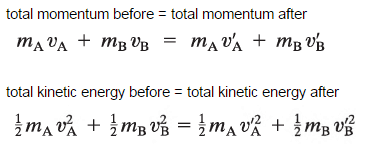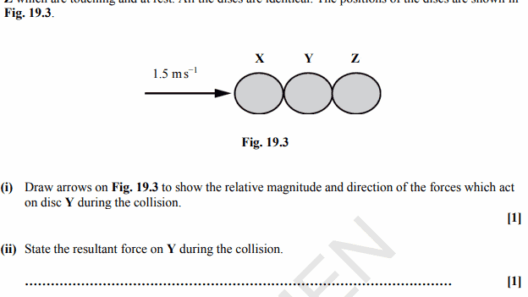The principles of physics offer profound insights into the workings of our universe, especially when it comes to the conservation of momentum and energy. Understanding these concepts is critical for various fields, from engineering to environmental science. This article delves deep into the intricacies of momentum conservation, particularly when kinetic energy undergoes transformations, and explores the seeming paradox of how momentum can remain constant while kinetic energy does not.
Momentum and kinetic energy are two foundational concepts in physics, yet they differ significantly in how they operate within a system. Recognizing their differences and interrelations is essential to grasping how momentum can be conserved in systems where kinetic energy is not preserved.
Before delving into complex examples, let’s clarify what momentum and kinetic energy entail.
Momentum, denoted as ( p ), is the product of an object’s mass and its velocity, mathematically expressed as ( p = mv ). It is a vector quantity, meaning it has both magnitude and direction. In a closed system, the total momentum before any interactions must equal the total momentum after those interactions. This principle is known as the conservation of momentum.
Conversely, kinetic energy, represented as ( KE ), is a scalar quantity defined by the equation ( KE = frac{1}{2}mv^2 ). Unlike momentum, kinetic energy is dependent on the square of velocity, which makes it susceptible to changes even when momentum is conserved. This fundamental difference leads us to investigate the paradox of conservation.
Exploring the Principles of Conservation
The law of conservation of momentum asserts that in the absence of external forces, the total momentum of a system remains constant. This principle is easily demonstrable through various physical interactions, such as collisions. In a perfectly elastic collision, both momentum and kinetic energy are conserved. However, in inelastic collisions, momentum is conserved, but kinetic energy is not—making this distinction critically important in various applications, from car crashes to particle physics.
Contextualizing inelastic behavior reveals that energy is transformed into other forms, such as heat or sound, which dissipate through the system, resulting in a loss of kinetic energy. The classic example involves two vehicles colliding; while they will share momentum post-collision, the energy converts into heat and sound, leading to a degradation in kinetic performance.
Factors Influencing Energy Transformations
Several factors influence how energy transforms during momentum interactions. One prominent aspect is the contact time between objects during a collision. Longer interaction times typically yield a more significant transfer of energy into forms other than kinetic energy. This transfer happens as deformations in materials occur, generating heat. Moreover, various materials respond differently upon impact, compounding these changes. Comparative studies of elastic versus inelastic materials can unravel essential insights into how momentum manifests in energy transformations.
The impact angle also crucially determines the outcomes of momentum exchanges. In perfectly elastic conditions, where kinetic energy remains conserved, the angle allows for maximum energy transfer velocity—enabling both objects to rebound efficiently, thereby conserving kinetic energy. However, in oblique collisions, kinetic energy may dissipate into other forms due to inadequate rebound angles or surface friction. Thus, these mechanical considerations reinforce the complexities surrounding conservation laws.
Real-world Applications of Momentum Conservation
The implications of momentum conservation reach far beyond abstract physics. In engineering design, the analysis of momentum transfers can optimize safety features in vehicles, ensuring that energy absorption occurs efficiently to protect occupants during collisions. The crumple zones in automobiles are a testament to the understanding of how momentum balances against energy dissipation to foster safety.
Similarly, in the realm of environmental science, understanding these principles assists in developing more sustainable technologies. For instance, when designing wind turbines, engineers must consider the momentum transfer from wind to the blades, allowing for efficient energy conversion while minimizing energy losses. The physics of momentum conservation thus underpins innovations that propel us towards a more sustainable future.
Addressing Buyer Concerns in Energy Innovations
Concerns about efficiency and sustainability are paramount in today’s energy discourse. Customers seeking greener technologies often question the efficacy of energy transfer processes and how these relate to environmental impacts. For businesses, comprehending the conservation laws allows for designs that maximize energy use while minimizing waste.
By focusing on systems that harness principles of momentum conservation, organizations can address these buyer concerns effectively. They can provide products that utilize energy transformations efficiently without compromising energy density. Understanding the delicate balance between conservation of momentum and kinetic energy provides a foundation upon which innovative solutions are built.
Understanding Momentum’s Role in Energy Transformations
The interplay between momentum and energy is a subject of rich exploration, showcasing the elegance of physics. The ability to conserve momentum while acknowledging the limits of kinetic energy offers vital insights into both theoretical and practical applications. As we navigate towards a future rooted in sustainability, the principles of physics will guide innovations that align with both ecological considerations and technological advancements. By appreciating the nuances of momentum conservation, we cultivate a deeper understanding of energy transformations that define our physical world.








